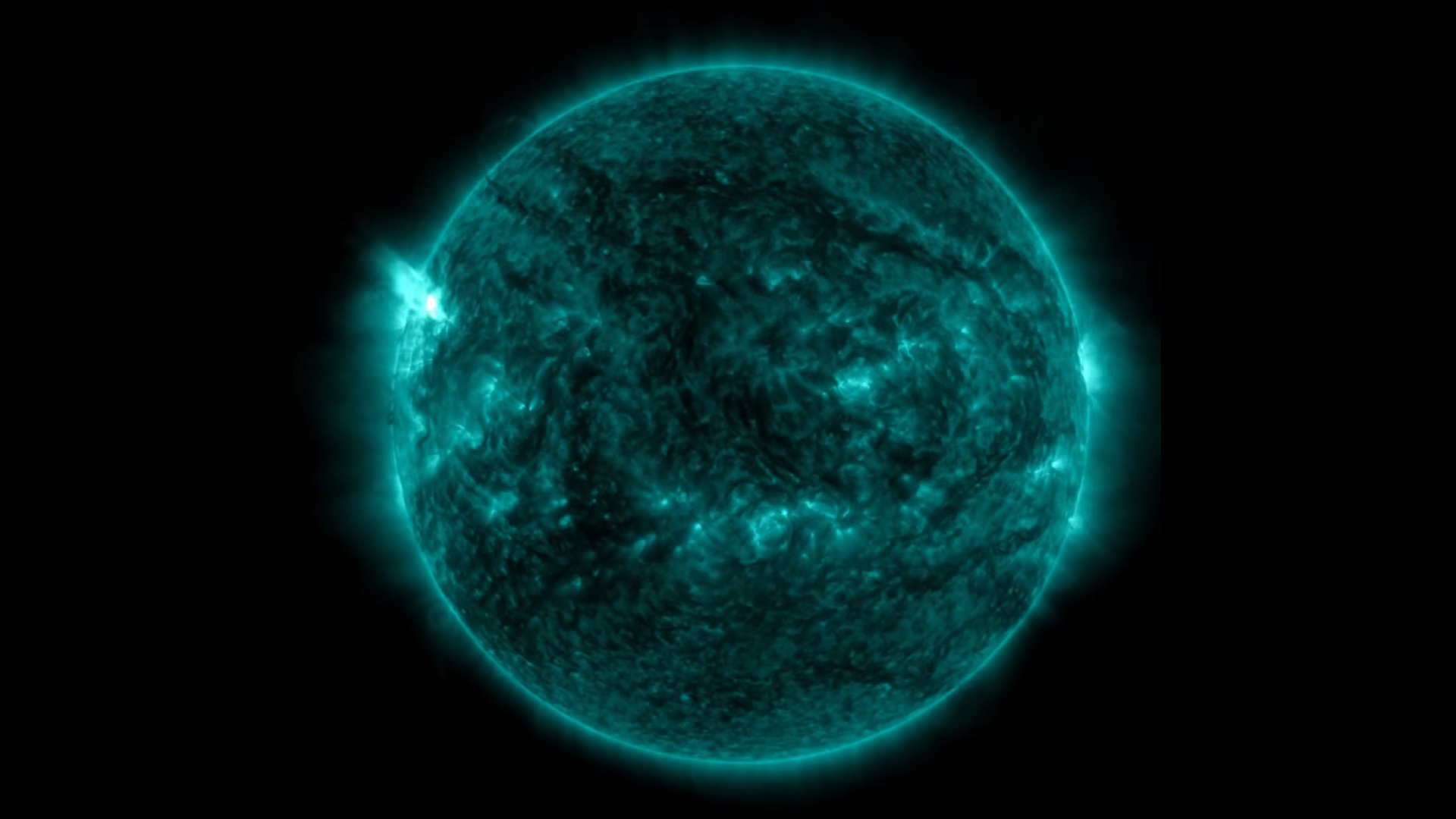
The sun has had an active few days, firing several powerful solar flares and (plumes of searing-hot solar material out into space.
On Tuesday (May 13), a sunspot on the sun’s surface named AR4086 exploded, releasing an X1.2-class solar flare, part of the most powerful category of flare. Then, during the early hours of Wednesday (May 14), another sunspot named AR4087 spat out an M5.3 flare, followed by an even more powerful X2.7 flare, and yet another M7.7 flare a few hours later.
The radiation of these solar flares triggered radio blackouts on the sun-facing side of the planet at the time of the flares, affecting North and South America, Europe, Africa, the Middle East, and Southeast Asia.
Solar flares are sudden, intense bursts of electromagnetic radiation released from regions of intense magnetic activity on the sun’s surface, usually from or near sunspots. The sun’s surface is threaded with powerful magnetic fields, and sometimes these magnetic field lines get twisted and tangled. When the stress on these field lines becomes too great, they can snap and realign, releasing a massive amount of stored magnetic energy as a solar flare.
Some solar flares are much more powerful than others. NOAA’s Space Weather Prediction Center categorizes solar flares as either A, B, C, M, or X-class, with each class representing a ten-fold increase in power over the previous one. X-class flares are the most powerful and least common form of solar flare. The number after the letter class indicates further how strong the flare is: an M9 flare is nine times more powerful than an M1 flare. This week’s X1.2 and X2.7 flares were on the lower end of this most intense category; the strongest recorded flare in the last seven years was an X9 in October 2024.
These newly-launched X-class flares were the first of their kind recorded since March, according to Live Science’s sister site Space.com.
Related: A mysterious, 100-year solar cycle may have just restarted
Solar flares cause radio blackouts because of the intense X-ray and ultraviolet radiation unleashed on our planet’s atmosphere. Normally, shortwave radio signals — used for long-distance communication — bounce off the ionosphere, allowing them to travel far across the globe. The radiation of a solar flare increases the ionization (charging) of atoms and molecules in the lower ionosphere, especially in a region called the D-layer, meaning that the D-layer absorbs radio signals instead of reflecting them, especially those in the high-frequency range.
X-class solar flares can cause radio blackouts across the sunlit side of the Earth, impacting mariners, aviators, and also triggering satellite navigation errors.
Wednesday’s X2.7 flare also flung out a coronal mass ejection (CME), a massive explosion of charged solar plasma, which are often thrown from the sun’s surface at the same time as a solar flare. While flares travel at the speed of light, taking only 8 minutes to reach Earth, CMEs usually travel at between 250 kilometers per second (km/s) and 3000 km/s, taking up to a few days to reach our planet.
When a CME arrives at Earth, the charged particles interact with our planet’s atmosphere and magnetic field, usually triggering a geomagnetic storm that results in the appearance of the northern and southern lights, as well as potential power grid failures and impacts to satellites and GPS. Geomagnetic storms are classed from G1 to G5, with the most powerful G5 storms resulting in auroras “as low as Florida and southern Texas” and the “complete collapse or blackouts” of some power grids, according to NOAA’s Space Weather Prediction Center.
However, due to the position of sunspot AR4087 at the sun’s northeastern limb, this CME and others potentially released by recent solar flares have not been directed toward Earth, instead aiming for our planetary neighbour Mars. NASA models show that the CME is due to hit the Red Planet on Sunday (May 18), and could trigger auroras across Mars’ atmosphere.
Over the next few days, sunspot AR4087 will slowly inch across the sun, putting Earth directly in its line of fire. If the sunspot fires off more solar flares, we could be due for more radio blackouts, and if these flares are accompanied by CMEs, we might experience geomagnetic storms, resulting in auroras being visible much further away from the poles than usual.
According to NOAA’s Space Weather Prediction Center, there is a high chance of at least M-class solar flares heading our way in the coming three days.
“Given the magnetic complexity of Region 4087, there’s a 65% chance that M-Class level flare activity will occur through 17 May with a 30% chance for X-Class levels during the same time,” the Space Weather Prediction Center said in a forecast discussion on Thursday.
Sun quiz: How well do you know our home star?
